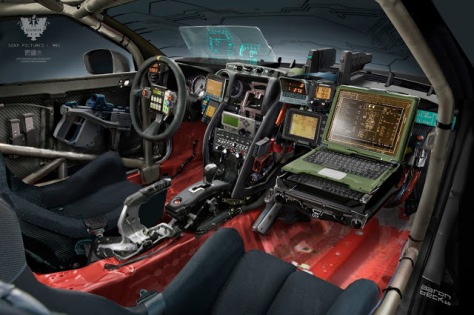It’s been more than four decades that I have been involved with designing products for the automotive industry. And, it seems that I lost touch.
No, not that I don’t know all the new developments (they are all reported in technical journals- so I do know about them)- but the design considerations and criteria- those are the things with which I have lost touch.

I’m sure y’all have recognized how much effort manufacturers have put in to make our car rides smoother and quieter. Insulation under the hood, better engine-passenger compartment isolation, insulation in the roof, and making the cars more aerodynamic. That last part means not only is our gas mileage improved- but the wind doesn’t impart as much noise to that “smooth surface” cars now present.
But, I’m not sure you will recognize this design change.
Do you realize that your sound system (it is no longer just a radio) does not have a set volume? As you increase the speed at which you drive (and, therefore, change the noise level in the car), the volume is adjusted. So you can hear (at what you think is constant volume) your music, your news, your book.
And, here’s the thing I didn’t realize. Although it’s inherently obvious once I considered it.

Our car tires.
I always wondered why different models from the same car manufacturer had different tire vendors. Because the design of the tire is chosen to minimize road noise.
The second we are traveling at 25 mph or more- our tires are now louder than our engine. (Unless you are one of those PITA that sets your car engine/muffler volume at deafening. Or play your sound system so loud that it deafens me when we are abreast- and your windows are closed!!!!!) And, at the speeds I normally travel, the tires are making more noise than a freight train (at around 86 to 90 db).
Here’s why. The curvature of the tire- where the “rubber meets the road”- is like a trumpet horn. The noise at the front and the back of the car has the tire sound amplified by 15 to 20 db! OK- it’s not really like a trumpet. Because the trumpet is a tube in which air is oscillating.
But our tires are an out of tune quintet. The front of the tire- where it meets the road, has air squished out of the tread- that’s the trumpet. The back of the tire- the air is sucked back into the tread (more of a whoosh than a trumpet) and the rubber “pops” off the macadam. So, we have a drum join in the group.
And, turning the wheel- the rubber is now vibrating along the macadam- so we have a violin playing. All the while the thick side walls of the tire are acting like a bass. And, then, there’s the harmonic with the car vibration!
The tread design sets the noise level. A bad tread design can add 25 db to the noise inside the car. And, no tire manufacturer can set the composition of the road- which is one of the key factors in sound quality.
If the road is porous, there is less ‘action’ of the air in the tread grooves. The sound can be absorbed. A thick road bed renders the drive far noisier.
Now, if only the tire manufactures and the road pavers can work together to make my car play Hamilton…








Ha-ha this I great! I did not realize this about the newer models. One of our cars is 18 years old, and when we drive it, we feel every bump!
As long as it keeps on going, Marcia, there’s no need to put it to pasture.
Ha! Right? But hey, who knew that the music volume doesn’t stay constant but is actually being adjusted? That is fascinating! And I didn’t know about those other noise control implementations, either.
Glad to help you learn something new, Jeanine.
Wow, again you’re bringing such interesting info to your readers!
Barb recently posted..Active listening techniques boost online course results
It’s what I want to do- glad to see I succeeded, Barb!
And here I thought you were going to sing umm papa maw maw by the Oak Ridge Brothers! LOL
Martha recently posted..Flashback Friday – Lia’s Day at the Mall
It was a possibility!